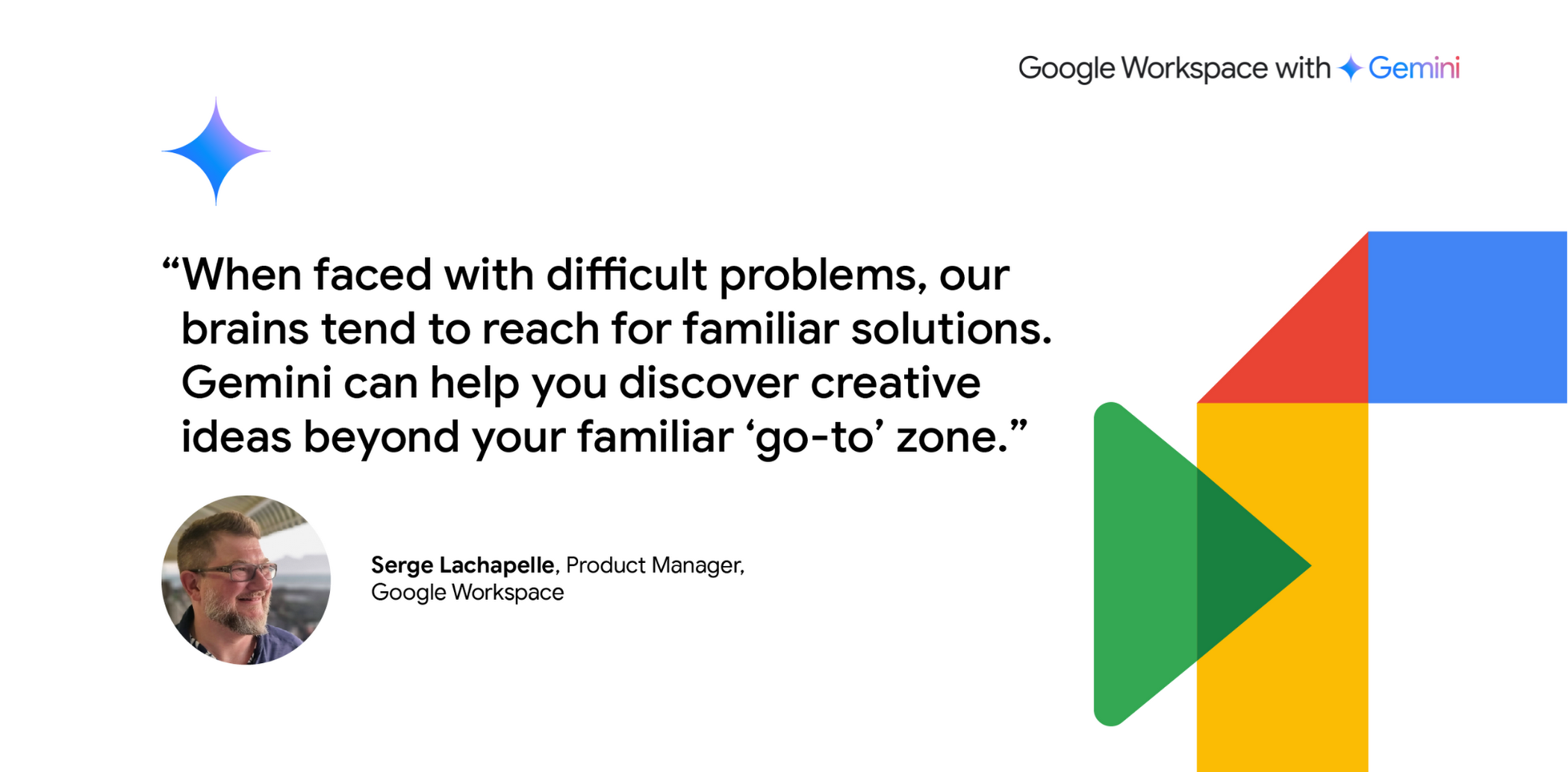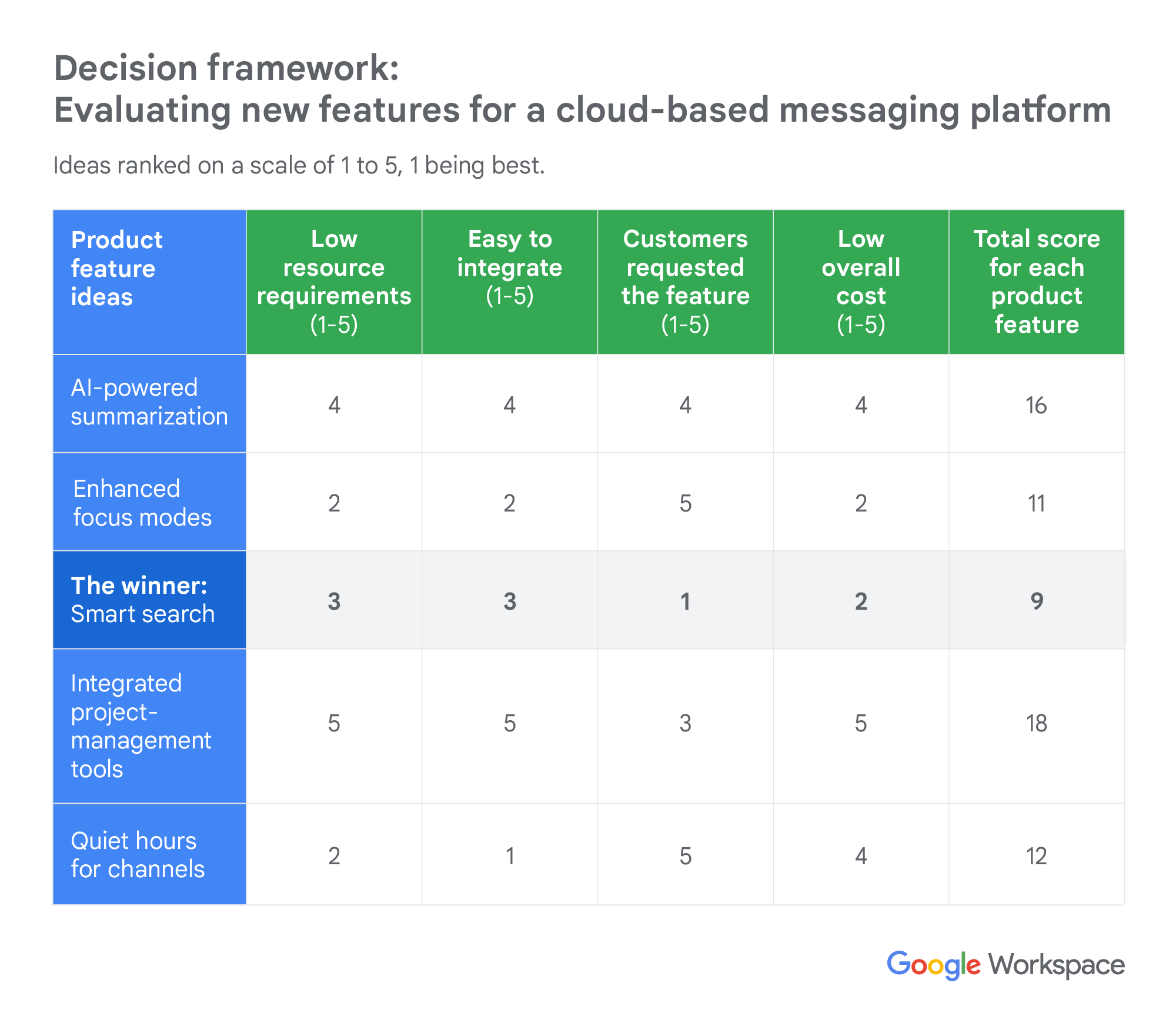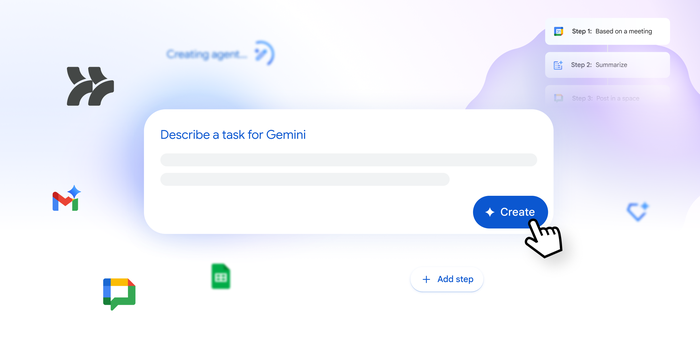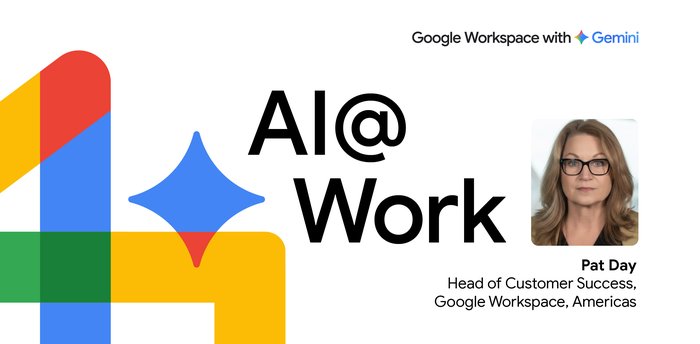How gen AI can help us make better decisions

Serge Lachapelle
Director of Product Management, Google Cloud
Google Workspace Newsletter
Keep up with the evolving future of work and collaboration with insights, trends, and product news.
SIGN UPCreative problem solving starts with smart and diverse ideas. And lots of them. Gen AI tools like Google Workspace with Gemini can offer a treasure trove of ideas in a brainstorming phase. They can also help ground our choices in research, reduce bias, and, along the way, fuel better decision-making. Here are several ways to get there.
Lean on an AI research assistant to unlock insights
Several AI models offer research tools that can also generate reports. Deep Research is a new feature built into Gemini Advanced and freely available to most Workspace customers. It can help you structure and execute a multi-step research plan. First, select your research topic and then Deep Research uses a phased approach to collect, analyze, and report the information.
A product development team could use Deep Research to first analyze market trends and competing products and then generate a report recommending specific product innovations. I recently used it to build an account naming strategy for a customer with very edge-case issues. Our own experts in this area validated the report by saying “We could not have done a better job!”
Find the unexpected solution to a problem
When faced with difficult problems, our brains tend to reach for familiar solutions. When looking into this, I discovered that this is referred to as the “The Einstellung Effect."* Gemini can help you discover creative ideas beyond your familiar “go-to” zone.
Here are two examples of thinking outside the box with Gemini:
Our customer Sundogs is a creative performance consultancy that serves a global footprint for clients, from media and entertainment companies to global beauty brands. When their client Urban Decay, a brand born in the ʼ90s, wanted to rebrand for a modern audience, they used Gemini to help the team understand the difference between what was cool then and now. Before, it could take days to pull together these types of insights, but Gemini created a chart comparing audience behaviors in minutes. This gave Urban Decay insights on how to pivot their brand authentically while staying true to their core values.


A chart produced by Gemini for the Urban Decay rebrand (edited for clarity)
And I also have my own, more technical example. I had an enterprise customer that was dealing with a configuration issue that caused an unusual chain of technical events. These events were documented in multiple lengthy reports all in different formats — chat messages, tickets from support systems, emails, and more. But there was no easy way for me to comb through all this to understand what happened.
So I gathered everything and pasted it into gemini.google.com (which preserves an organization’s trust boundary) and I used Gemini to summarize what had happened, and I eventually prompted Gemini to write a root cause analysis. I reviewed the report, added a bit of my personal touch, and that was it. This is a task that I otherwise wouldn’t have been able to do. It would have required a team with many days of work to do what Gemini for Workspace helped me do in a matter of hours.
Ideate quickly — and at scale
Gen AI offers a fast, cost-efficient way to explore novel concepts and connect ideas. Let’s say a software product team needs help identifying and prioritizing new product features. Each team member preps for the brainstorming session so that they can present unexpected ideas and perspectives. For example:
One person gets ideas by feeding customer reviews and support tickets into Gemini.
Another asks Gemini to imagine what the product might look like in 2 years.
A third requests features inspired by game design.


Use ideas from Gemini to kick-start a brainstorming session.
Reduce bias
We all have biases — and so do gen AI tools. After all, they’re developed by people. Gen AI can help eliminate blind spots by offering a higher volume and diversity of ideas. Bias could be based on things like gender, level of education, or access to technology. It could also be based on job function. A team of young engineers, for example, might design a product that’s difficult for older consumers to use.
You may be unaware of a bias in your idea generation. Incorporate prompts designed to reveal less-visible approaches and views, to challenge or illuminate your own biases. You can even challenge tools like Gemini to surface potential sources of bias or conflicting ideas in your work.
A prompt example: Here's my idea for [describe your idea]. How can I make this more accessible for older consumers who live in Northern California? What other elements of bias might be in this idea?
Remember that an abundance of ideas in a brainstorming session is a good thing. But only humans have the context and ethical framework to evaluate those ideas and make decisions.
Before you make a decision, refine your options
Now that you’ve asked the right questions, it’s time to make some decisions. Set aside time to digest and interpret the information. Get feedback from team members and colleagues across your organization. For example, that software product team considering new features might ask customers which new features they like best. Gemini (accessed through Sheets, for example, or in gemini.google.com) can help by creating a decision framework. Gemini can suggest categories to consider, assign values, and create a chart with the data. If you’re evaluating new product features, you might prioritize:
Low resource requirements
Ease of integration
Rate of customer requests for the feature
Low overall cost


Rank new product feature ideas using a decision matrix developed with Gemini.
Embrace change
With Gemini as your creative thought partner, you can break free from conventional thinking and gain a fresh approach. That can help you anticipate and adapt to future changes — and be better prepared for tomorrow’s business challenges.
Ready to unlock better decisions? Explore Google Workspace with Gemini to get started.
*Loesche, Frank and Ionescu, Thea. "Mindset and Einstellung Effect," in Encyclopedia of Creativity (Third Edition), ScienceDirect, 2020, pp. 174-178.



